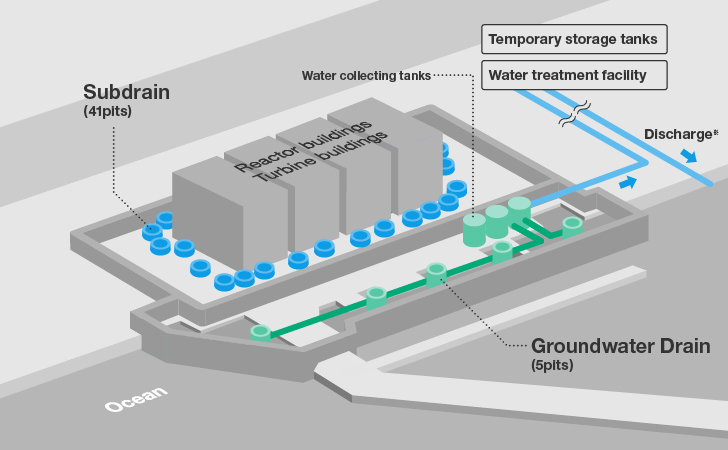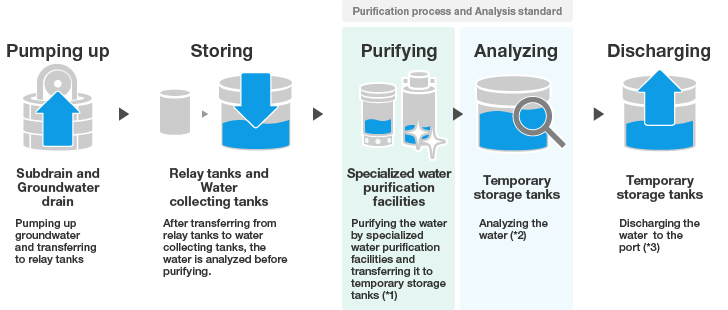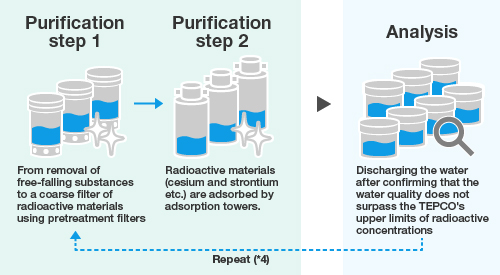Decommissioning Plan of Fukushima Daiichi Nuclear Power > Plan & Action > Major Initiatives for Water Management > Subdrain system
The subdrain system is a group of wells installed near the reactor and turbine buildings, which had to be restored and upgraded after damages in the March 2011 accident following the earthquake and tsunami. Once back in operation, the subdrain system will pump up 300 to 500 tons of groundwater per day preventing it from entering the reactor facilities.
The water will be treated in a newly installed purification system that will treat the water to a safer level than any international or Japanese water safety standards. TEPCO has assured all concerned that any water discharged would meet the stringent criteria.
As a result of this strategy, the total daily accumulation of water is expected to be cut by approximately 150 tons per day.
The groundwater drain system is another group of wells installed in the bank protection area by the ocean. It pumps up the groundwater flowing down toward the ocean up to where the seaside impermeable wall is.
Both systems reduce the amount of highly contaminated water on the premises and reduce the risk of spreading radioactive contamination in the ocean.


In order to purify the groundwater, the concentrations of cesium and strontium are reduced in two purification steps.
Only after confirming that the concentrations of cesium-134, cesium-137, Gross β (strontium etc.) and tritium do not surpass the TEPCO's upper concentration limit and that other γ nuclides are not detected, the water will be discharged.

© Tokyo Electric Power Company Holdings, Inc.